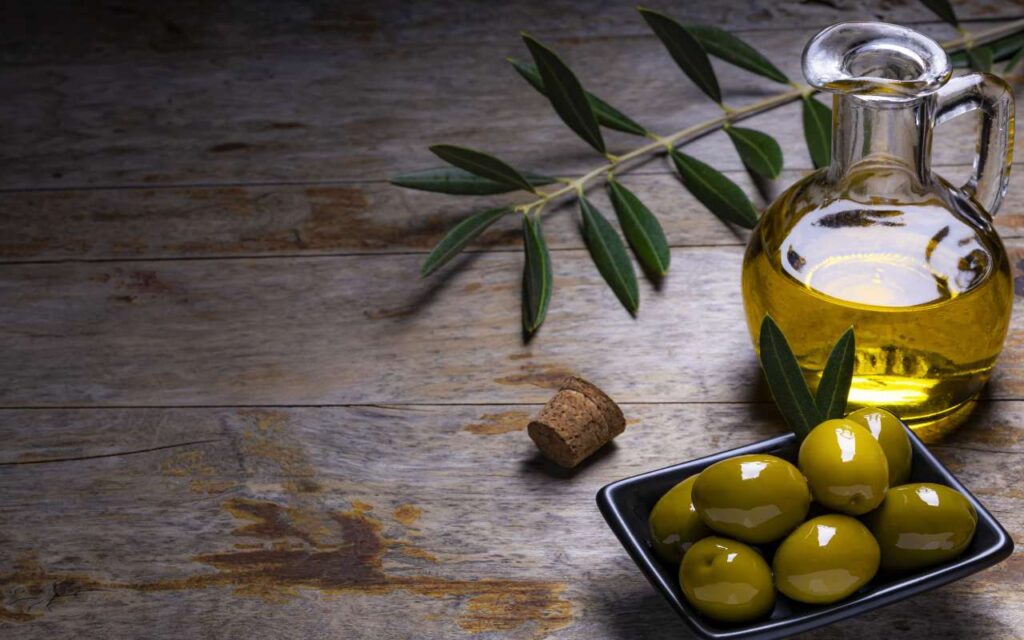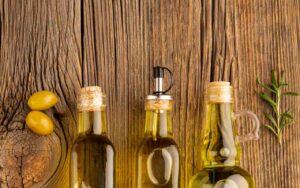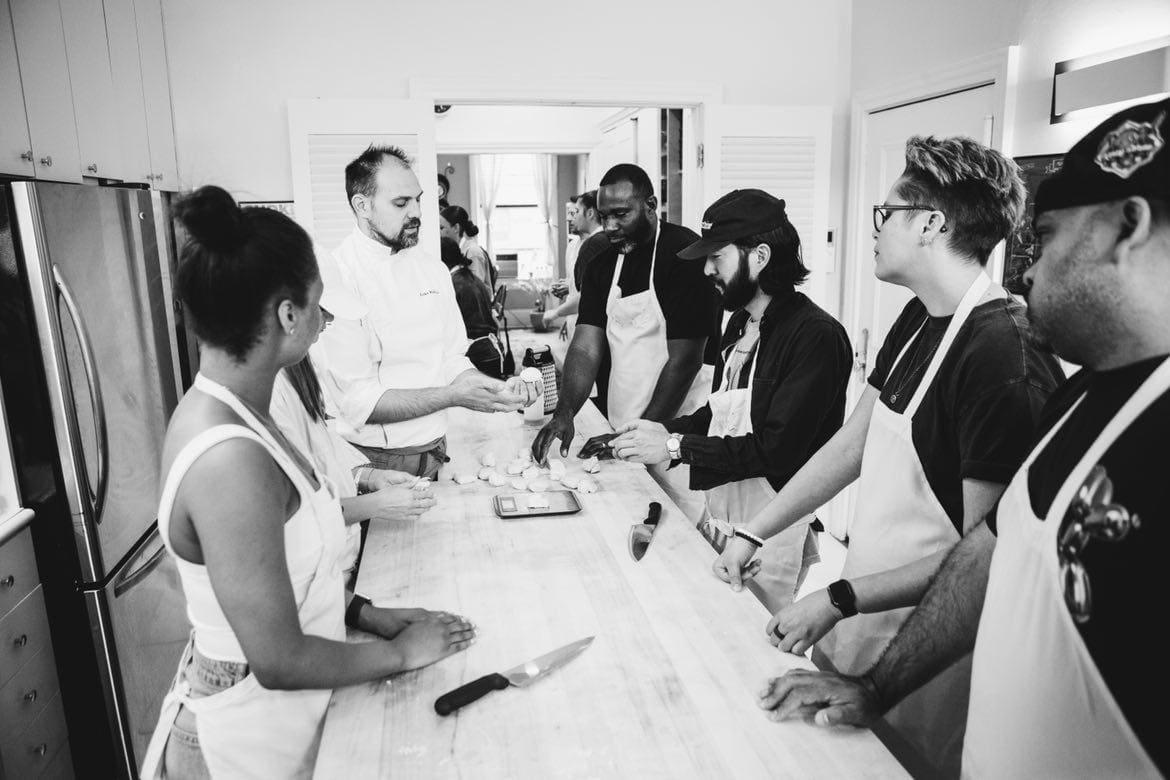Olive oil is one of the world’s most celebrated ingredients, often described as liquid gold for its taste, nutrition, and cultural heritage. Whether you are drizzling it over a salad, baking bread, sautéing vegetables, or grilling meats, olive oil provides both health benefits and culinary versatility. Unlike many refined oils, olive oil retains its natural antioxidants and healthy fats, making it not only a flavorful choice but also a cornerstone of a balanced diet.

This guide covers everything you need to know about cooking with olive oil—from its historical significance and health advantages to practical cooking techniques, recipe ideas, and tips for choosing and storing the right oil. By the end, you will have the knowledge to confidently use olive oil in your everyday cooking and enjoy its full range of benefits.
Why Olive Oil is a Kitchen Essential
Olive oil is more than a simple cooking fat—it is an essential ingredient that has shaped cuisines and cultures around the globe. Its unique combination of taste, nutrition, and tradition makes it indispensable in any kitchen. To understand why olive oil is so important, we need to look at its history and the role it has played throughout human civilization.
History and Cultural Significance
Olive oil has been a part of human civilization for thousands of years, dating back to ancient Mesopotamia, Greece, and Rome. It was more than just food—it was medicine, fuel for lamps, and even a sacred offering. In Greek mythology, the olive tree was considered a divine gift, symbolizing peace and prosperity. Romans used it to anoint emperors and athletes, while families relied on it daily for cooking and health remedies. This rich cultural history still resonates today, especially in Mediterranean countries where olive oil is central to both diet and lifestyle.
By incorporating olive oil into modern cooking, you’re not just choosing a healthy fat—you’re participating in a tradition that has shaped culinary practices and communities for centuries.
Types of Olive Oil and Their Uses
Not all olive oils are created equal, and the type you choose can have a significant impact on the taste, nutritional profile, and cooking outcome of your dish. Understanding the differences between extra virgin, virgin, and refined olive oils allows you to make better choices depending on the recipe and desired flavor intensity.
Extra Virgin Olive Oil
Extra virgin olive oil (EVOO) is the gold standard of olive oils. It is obtained by cold-pressing olives without the use of chemicals or excessive heat, ensuring maximum retention of nutrients and flavor. EVOO is rich in antioxidants and polyphenols, with a low acidity level that indicates superior quality.
Its bold, fruity, sometimes peppery flavor makes it best suited for raw uses—like salad dressings, bread dips, and finishing touches on pasta, fish, or grilled vegetables. EVOO is often more expensive, but its health benefits and taste are unmatched. Contrary to common myths, you can also cook with EVOO, but it truly shines when used in ways that preserve its complex flavors.
Virgin Olive Oil
Virgin olive oil is also mechanically extracted but has a slightly higher acidity and less intense flavor than EVOO. While it may not have the same boldness, it is still nutritious and healthier than refined oils. Virgin olive oil works well in sautéing, roasting, or baking, offering a milder taste that won’t overpower your dish.
It’s a good middle-ground for those who want the benefits of olive oil without the stronger flavor of EVOO. Chefs often use virgin olive oil when they need balance—something light enough for cooking but still rich enough to provide character.
Refined and Light Olive Oil
Refined olive oil is processed using heat or chemicals to neutralize flavor and acidity, resulting in a lighter-tasting product. Light olive oil doesn’t mean fewer calories—it simply refers to its mild flavor and lighter color. These types are often chosen for high-heat cooking, like frying, because they have a higher smoke point.
However, refinement strips away many beneficial compounds, so they offer fewer health benefits compared to virgin or extra virgin oils. They can still be useful in baking or when you want a neutral oil that won’t compete with other flavors, but for nutrition and taste, they should not be your primary choice.
Health Benefits of Olive Oil
Beyond its role as a versatile ingredient, olive oil is one of the healthiest fats you can incorporate into your diet. Its combination of monounsaturated fats, antioxidants, and anti-inflammatory compounds makes it a powerhouse for overall wellness. Each health benefit contributes to why olive oil is central to the Mediterranean diet and highly recommended by nutritionists worldwide.
Rich in Antioxidants
Olive oil, especially EVOO, is loaded with antioxidants such as vitamin E and polyphenols. These compounds help neutralize free radicals, protecting cells from oxidative stress and slowing the aging process. Studies suggest that diets rich in antioxidants can reduce the risk of chronic diseases such as cancer, diabetes, and Alzheimer’s.
Unlike refined vegetable oils, olive oil maintains these natural compounds because it undergoes minimal processing. Incorporating EVOO into your meals ensures you’re nourishing your body with one of the most antioxidant-dense cooking oils available.
Healthy Cooking Oil
Olive oil is rich in monounsaturated fats (MUFAs), which are widely recognized as heart-healthy fats. MUFAs help reduce LDL cholesterol (the “bad” kind) while raising HDL cholesterol (the “good” kind). This balance lowers the risk of cardiovascular disease. Beyond heart health, MUFAs support weight management, reduce inflammation, and improve insulin sensitivity.
Olive oil also aids in the absorption of fat-soluble vitamins such as A, D, E, and K. Replacing butter or refined oils with olive oil is one of the simplest ways to make your meals healthier without sacrificing flavor.
Heart Health and Cholesterol
The link between olive oil and cardiovascular health is well established. Populations that follow the Mediterranean diet, where olive oil is the main source of fat, experience lower rates of heart disease. Olive oil helps reduce blood pressure, improve blood vessel function, and decrease the risk of arterial plaque buildup.
Polyphenols and oleic acid, the primary fat in olive oil, work together to protect heart health. Incorporating olive oil daily—whether drizzled over vegetables, mixed into grains, or used in cooking—can significantly reduce your risk of heart-related conditions.
Stability at High Heat
A widespread myth claims olive oil is unsuitable for cooking due to its smoke point. In fact, EVOO is highly stable under heat because of its antioxidant content and monounsaturated fats. Studies show EVOO retains its nutritional integrity even when used for frying, baking, or sautéing at moderate temperatures. Compared to many refined oils, olive oil produces fewer harmful compounds when heated. This makes it a safe and reliable option for everyday cooking, far from the fragile oil it’s often portrayed as.
Anti-Inflammatory Properties
Olive oil’s anti-inflammatory compounds make it a natural ally against chronic disease. One of the most powerful is oleocanthal, which mimics the effects of ibuprofen in reducing inflammation. Regular consumption of olive oil has been linked to reduced risk of arthritis, heart disease, and even certain cancers. By lowering inflammatory markers in the body, olive oil contributes to long-term wellness. Using it daily as part of your cooking or as a finishing oil helps your body stay resilient and balanced.
Flavor Enhancement
Beyond its health benefits, olive oil elevates the flavor of any dish. Its taste profile can be grassy, peppery, buttery, or fruity depending on the variety and harvest. This complexity enhances the natural taste of foods, from fresh vegetables to grilled meats. Unlike neutral oils, olive oil contributes depth and character, turning simple meals into gourmet experiences. By using olive oil not just as a cooking fat but as a flavor enhancer, you elevate your dishes while also nourishing your body.
What is the Olive Oil Smoke Point?
The smoke point of an oil is the temperature at which it begins to break down and produce visible smoke. For olive oil, the smoke point depends on the type and quality. Extra virgin olive oil typically has a smoke point between 375–410°F (190–210°C), while refined or light olive oils can reach higher temperatures, around 465°F (240°C). Contrary to popular belief, this makes extra virgin olive oil perfectly suitable for most everyday cooking methods such as sautéing, roasting, and baking.
What makes olive oil unique compared to many other oils is its stability under heat. Even when heated, it retains beneficial compounds like antioxidants and polyphenols, which help protect the oil from oxidation. This means olive oil actually performs better than many refined seed oils when exposed to cooking temperatures. Understanding its smoke point removes the myth that olive oil is only for raw use—it is safe, healthy, and versatile for almost every cooking technique.
Can You Cook With Olive Oil?
Yes—you absolutely can cook with olive oil, and in fact, it’s one of the healthiest and most versatile fats you can use in the kitchen. A persistent myth claims that olive oil should only be used raw because of its smoke point, but modern research proves otherwise. Extra virgin olive oil is stable under heat due to its high content of monounsaturated fats and antioxidants, which protect it from breaking down during cooking. Compared to many refined seed oils, olive oil actually produces fewer harmful compounds when heated at normal cooking temperatures.
Cooking with olive oil not only preserves its beneficial compounds but also enhances the flavor of your food. Whether you are sautéing vegetables, roasting meats, baking bread, or even shallow frying, olive oil is a reliable option that balances nutrition and taste. By using it confidently in both low-heat and moderate-heat methods, you can enjoy all the richness olive oil brings to your dishes while supporting your health.
Cooking with olive oil at home can be rewarding, but for a restaurant-quality experience, you can book a private chef in NYC who brings the Mediterranean touch straight to your table.
Cooking Techniques with Olive Oil
Olive oil is incredibly versatile in the kitchen and can be used in nearly every cooking method, from light sautéing to baking and grilling. Understanding the right way to apply olive oil in different techniques ensures you get the most flavor and nutrition out of it. Each method highlights unique qualities of the oil, whether it’s its ability to caramelize vegetables, keep baked goods moist, or add smokiness to grilled meats.
Sautéing and Stir-Frying
Sautéing and stir-frying with olive oil is one of the most common and effective ways to bring out flavors in everyday meals. Olive oil distributes heat evenly and coats ingredients with a light layer that enhances taste and texture. Vegetables sautéed in olive oil develop a delicate caramelization while retaining their nutrients, and proteins like chicken or shrimp cook quickly without drying out. Extra virgin olive oil can withstand the typical heat of sautéing, which is usually below its smoke point, making it perfectly safe. Stir-frying with olive oil also works well because its stability prevents harmful compounds from forming during quick, high-heat cooking. Beyond safety, olive oil adds a subtle richness that complements both Asian-inspired stir-fries and Mediterranean-style vegetable dishes.
Baking with Olive Oil
Baking with olive oil is an excellent way to reduce saturated fats while improving both texture and flavor in baked goods. Olive oil provides moisture, keeping cakes, muffins, and breads soft and tender for longer compared to butter. It also adds a delicate fruitiness that pairs well with citrus, nuts, and chocolate. In savory baking, such as focaccia or vegetable tarts, olive oil contributes depth and authenticity.
Substituting butter with olive oil in recipes not only lowers cholesterol intake but also makes desserts lighter and easier to digest. Bakers often note that using olive oil gives baked goods a longer shelf life, as its antioxidant properties slow down staling. Whether in sweet or savory baking, olive oil is a healthier, flavorful alternative that doesn’t compromise results.
Grilling and Roasting
Grilling and roasting are methods where olive oil truly shines, thanks to its ability to enhance browning and lock in moisture. A light coating of olive oil on vegetables or meats before roasting ensures even caramelization and prevents food from sticking. EVOO, with its natural antioxidants, maintains its integrity under roasting temperatures and adds complexity to the final dish.
When grilling, olive oil not only prevents dryness but also acts as a carrier for herbs and spices, creating aromatic marinades. For example, brushing olive oil mixed with garlic and rosemary on lamb or fish before grilling enhances flavor and keeps the protein juicy. Root vegetables tossed in olive oil before roasting become golden and crisp on the outside while remaining tender inside.
Key Considerations
When cooking with olive oil, a few important factors should always be kept in mind to maximize both health benefits and taste.
- Smoke Point: While all oils have a smoke point, extra virgin olive oil is stable enough for most cooking methods. Its antioxidants actually protect the oil during heating, making it safe for sautéing, baking, and roasting.
- Antioxidants: To enjoy the full benefits of olive oil, choose high-quality extra virgin varieties from recent harvests, as they contain the highest levels of polyphenols and vitamin E.
- Avoid Overheating: For best results, use olive oil at moderate temperatures and avoid prolonged, repeated heating. Overheating can diminish both flavor and nutrients. By being mindful of these key considerations, you can use olive oil confidently in your kitchen without worrying about losing its benefits.
Olive Oil in Everyday Recipes
Olive oil is not just for cooking—it also serves as the foundation for countless dressings, marinades, dips, and traditional dishes. Its ability to blend flavors and add richness makes it an indispensable ingredient in everyday meals. From quick salad dressings to Mediterranean classics, olive oil can elevate simple recipes into wholesome, flavorful experiences.
Dressings and Marinades
Olive oil is the backbone of many homemade dressings and marinades. Its smooth texture and subtle fruitiness allow it to blend seamlessly with vinegar, lemon juice, or herbs. A classic vinaigrette, made from olive oil and balsamic vinegar, transforms even the simplest salad into something memorable. In marinades, olive oil penetrates proteins, tenderizing meat and distributing flavors deep into the dish.
It carries the aromas of garlic, herbs, and spices, making chicken, fish, or vegetables flavorful and juicy after cooking. Because it is stable and nutritious, olive oil in dressings and marinades not only improves taste but also boosts the absorption of fat-soluble nutrients from vegetables.
Dips and Sauces
From Mediterranean classics like hummus and baba ganoush to Italian pesto and Spanish aioli, olive oil is a key ingredient that ties flavors together. It provides richness and a velvety texture, turning simple ingredients into smooth, indulgent dips and sauces. A drizzle of EVOO on top of hummus enhances its aroma and presentation, while pesto would be incomplete without its signature olive oil base.
Olive oil also helps stabilize emulsions, making sauces creamier and longer-lasting without artificial additives. Unlike heavy cream-based sauces, those made with olive oil are lighter, healthier, and still incredibly satisfying. This versatility makes olive oil an essential pantry item for anyone who enjoys preparing dips and sauces at home.
Traditional Mediterranean Dishes
Mediterranean cuisine cannot be imagined without olive oil. Iconic dishes such as Greek moussaka, Italian bruschetta, or Spanish gazpacho rely on it not just for cooking but for authentic flavor. Olive oil is often the finishing touch in traditional recipes, drizzled over soups, vegetables, or fresh bread. It’s also used generously in slow-cooked stews and braises, where it deepens flavors over time.
Beyond taste, its presence in Mediterranean diets contributes to some of the highest life expectancies in the world. Cooking these dishes with olive oil connects you to centuries of tradition while also aligning with one of the healthiest eating patterns globally recognized by nutrition experts.
From Spanish gazpacho to tapas, olive oil is central to authentic Mediterranean cuisine. You can experience this firsthand in our Spanish cuisine cooking class
Easy Dishes You Can Make with Olive Oil
One of the best ways to appreciate olive oil is by using it in real dishes that showcase its flavor and health benefits. From appetizers to main courses and even desserts, olive oil can transform everyday ingredients into something extraordinary. Below are some simple yet delicious recipes where olive oil plays the leading role.
Classic Mediterranean Salad with Extra Virgin Olive Oil
A Mediterranean salad is one of the simplest ways to highlight the richness of EVOO. Combine fresh tomatoes, cucumbers, red onions, Kalamata olives, and feta cheese. Drizzle generously with extra virgin olive oil and a splash of red wine vinegar. Season with oregano, salt, and pepper. The olive oil ties everything together, enhancing freshness while adding depth and a silky texture. This salad not only tastes refreshing but also delivers antioxidants, healthy fats, and vibrant nutrients in every bite.
Olive Oil Roasted Vegetables
Roasting vegetables with olive oil brings out their natural sweetness and creates a caramelized exterior with a tender inside. Chop vegetables such as carrots, bell peppers, zucchini, and potatoes. Toss them in extra virgin olive oil, garlic, rosemary, salt, and pepper. Roast in the oven at 400°F (200°C) for 25–30 minutes until golden. The olive oil ensures even cooking, adds flavor, and preserves nutrients. This recipe works as a healthy side dish or even a vegetarian main course, packed with both taste and nutrition.
Garlic and Olive Oil Pasta (Aglio e Olio)
This Italian classic proves that with just a few quality ingredients, you can create an unforgettable dish. Cook spaghetti until al dente, then sauté sliced garlic in extra virgin olive oil until lightly golden. Toss the pasta with the garlic oil, red pepper flakes, and chopped parsley. Finish with a drizzle of fresh olive oil for extra richness. The simplicity of this recipe allows the olive oil to shine, making it the star ingredient. It’s budget-friendly, quick to prepare, and a delicious representation of Mediterranean cooking.
This classic pasta dish is simple to prepare, but you can also learn authentic techniques through our Italian cooking class. For an immersive experience, try a pasta-making class in NYC and discover how fresh pasta and olive oil create magic together
Olive Oil Lemon Cake
Olive oil isn’t just for savory dishes—it works beautifully in desserts as well. This lemon cake uses olive oil instead of butter, giving it a moist texture and a light, fruity flavor. Whisk together eggs, sugar, lemon zest, flour, baking powder, and olive oil, then bake until golden. The result is a soft, aromatic cake with a delicate crumb that stays fresh longer than butter-based cakes. The olive oil not only makes the dessert healthier but also adds a unique complexity that pairs perfectly with citrus.
If you’d like to explore baking with olive oil further, join our pastry class in NYC and learn professional techniques.
Tips for Cooking with Olive Oil
Olive oil is versatile and nutritious, but to get the most out of it you should follow a few simple tips. These practices will help you preserve its flavor, maintain its nutrients, and make your meals healthier and tastier.
If you want to master new ways of using olive oil in your meals, check out cooking classes in NYC where professionals guide you step by step.
Choose the Right Olive Oil for the Job
Not all olive oils serve the same purpose. Extra virgin olive oil is ideal for drizzling, dressings, and finishing dishes because of its rich flavor and antioxidants. Virgin or refined olive oils can be used for high-heat cooking or baking where a milder taste is preferred. Matching the oil to the cooking method ensures both great results and cost-effectiveness.
Don’t Be Afraid of Heat
Despite common myths, extra virgin olive oil can safely be used for sautéing, roasting, and even shallow frying. Its smoke point is high enough for everyday cooking, and its antioxidants make it more stable than many refined seed oils. Use moderate heat and avoid overheating to protect both nutrients and flavor.
Store Properly for Best Results
How you store olive oil directly affects its cooking quality. Keep it in a cool, dark place, ideally in a dark glass bottle or stainless steel container. Avoid storing near stoves or in direct sunlight, as heat and light accelerate oxidation. Fresh oil always delivers better taste and more nutrition.
Use Olive Oil to Enhance Flavor
Think of olive oil not only as a cooking fat but as a seasoning. Drizzle it over grilled vegetables, pasta, soups, or even desserts like cakes to enhance taste and aroma. Adding olive oil at the end of cooking preserves its delicate flavors and turns simple dishes into something special.
Tips for Storing and Preserving Olive Oil
Olive oil is a delicate product, and its quality can deteriorate quickly if not stored properly. Factors like light, heat, and air exposure can cause it to lose flavor and beneficial compounds. By following proper storage practices, you can extend its shelf life and preserve its unique qualities for months.
Best Containers and Conditions
The way olive oil is stored directly affects its freshness and taste. Dark glass bottles or stainless steel containers are ideal because they protect the oil from light, which speeds up oxidation. Olive oil should be kept in a cool, dark cupboard away from heat sources like ovens or stoves. Plastic bottles are less suitable because they can leach chemicals over time. If you buy in bulk, transfer smaller amounts to a sealed container for daily use to minimize air exposure. By protecting olive oil from light, heat, and air, you ensure it retains its aroma, flavor, and health benefits for as long as possible.
Shelf Life and Expiration
Olive oil has a limited shelf life, typically between 12 and 18 months from harvest. Unlike wine, it does not improve with age—freshness is crucial. Over time, olive oil becomes rancid, losing both taste and nutritional value. Signs of rancid oil include a stale, waxy flavor and a flat aroma.
Always check labels for harvest dates and try to consume olive oil within a year of purchase. Buying smaller bottles more frequently is a better strategy than storing large quantities for long periods. Using fresh olive oil ensures you’re getting the maximum health benefits and authentic flavor in your meals.
Common Myths About Cooking with Olive Oil
Despite its long history and proven benefits, olive oil is still surrounded by myths that prevent people from using it to its full potential. Addressing these misconceptions helps build confidence in using olive oil for everyday cooking.
Smoke Point Misconceptions
One of the most common myths is that olive oil cannot be used for cooking because of its smoke point. In reality, EVOO has a smoke point of about 375–410°F (190–210°C), which is sufficient for most cooking methods, including sautéing, roasting, and baking. Furthermore, olive oil’s antioxidants and monounsaturated fats make it more resistant to oxidation than many refined oils. This means it actually performs better under heat compared to seed oils like sunflower or soybean oil. The idea that olive oil is only for raw use is outdated and unsupported by science.
Olive Oil vs. Other Cooking Oils
Another misconception is that other oils are healthier or more versatile than olive oil. In fact, olive oil offers superior nutrition, with its balance of healthy fats and antioxidants, while many refined oils are stripped of beneficial compounds during processing. Vegetable oils such as corn or soybean oil may have slightly higher smoke points, but they lack the protective polyphenols found in EVOO.
Flavor is another distinguishing factor—unlike neutral oils, olive oil enhances taste rather than just acting as a cooking medium. For those prioritizing both health and culinary enjoyment, olive oil consistently proves to be the better choice.
How to Choose the Right Olive Oil
Choosing the right olive oil can be overwhelming, given the variety of labels, grades, and price points available. Knowing what to look for on packaging and how to recognize quality ensures you bring home an oil that delivers both flavor and nutrition.
Reading Labels and Certifications
When purchasing olive oil, carefully reading the label is essential. Look for terms like “extra virgin,” which indicate the highest quality. Certifications such as PDO (Protected Designation of Origin) or PGI (Protected Geographical Indication) guarantee authenticity and traceability. Checking the harvest date is equally important—fresher oils have more antioxidants and a stronger flavor profile.
Avoid vague labels such as “pure” or “light,” as these often indicate refined products with lower nutritional value. Trustworthy producers provide transparent information about the origin and processing of their oil, helping you make a confident choice.
Identifying Quality Olive Oil
High-quality olive oil is easy to identify once you know what to look for. It should smell fresh and vibrant, with notes of grass, herbs, or fruit. The taste should be balanced, sometimes slightly peppery, which indicates the presence of antioxidants. Oils that taste flat, greasy, or rancid are signs of poor quality or expired products. Quality olive oil is often packaged in dark bottles to protect it from light.
While premium EVOO may cost more, it delivers unmatched flavor and health benefits. Investing in quality olive oil ensures your meals are both nutritious and delicious.
This guide covers everything you need to know about cooking with olive oil. If you’re interested in experiencing olive oil in fine dining, visit Loza NYC.







